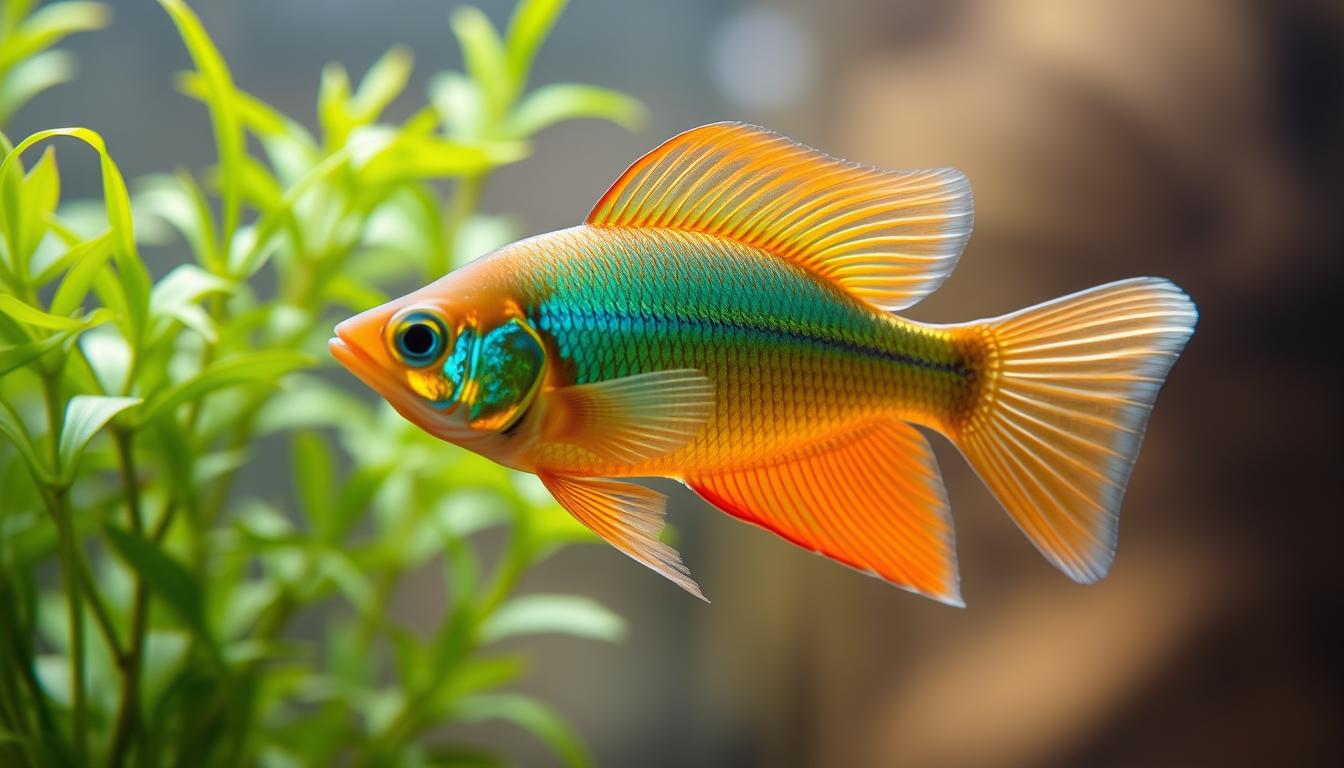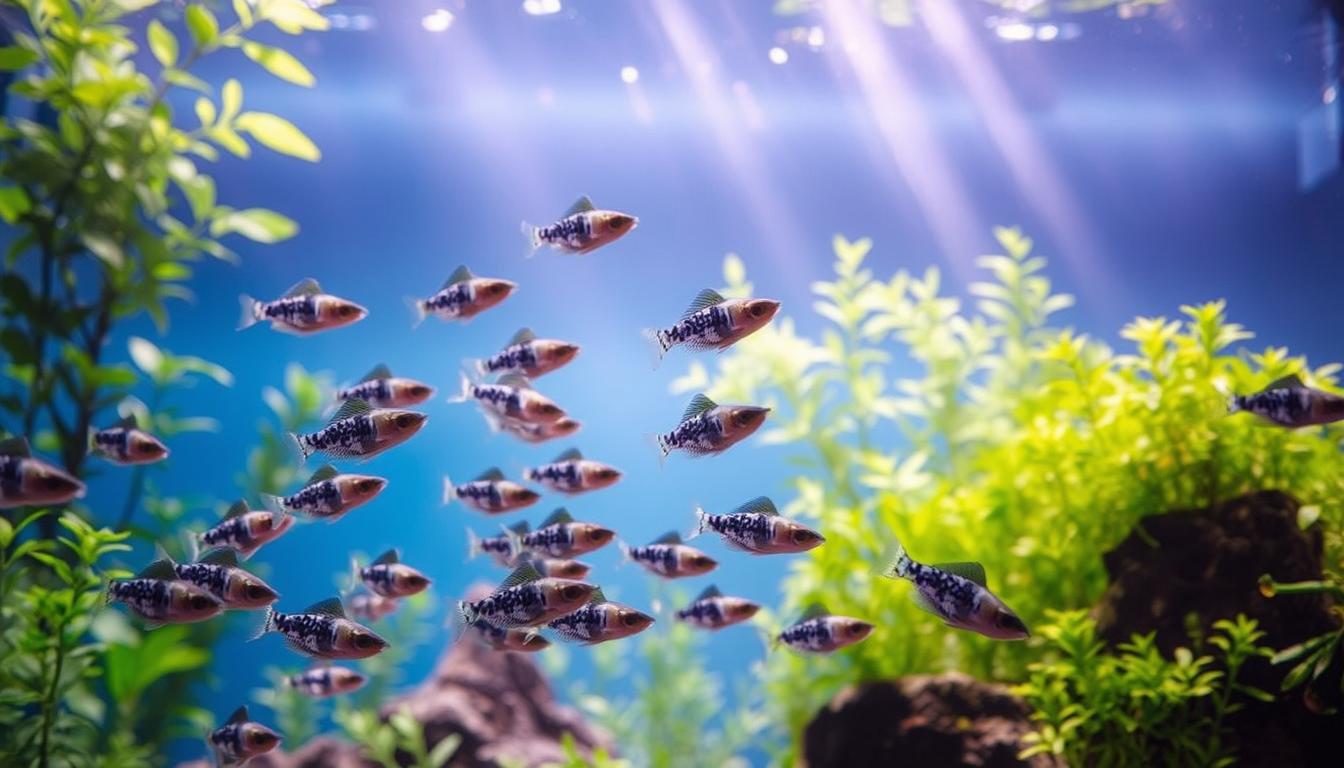Why Are Molly Fish Great for Beginners?
This post may contain affiliate links.
Are you wondering what makes mollies a top choice for those new to aquarium keeping? With their vibrant colors and active personalities, it’s no surprise they’re a favorite among beginners. Mollies are part of the Poeciliidae family and are known for being livebearers, giving birth to fully-formed fry rather than laying eggs.
These fish are not only beautiful to watch, but they’re also relatively easy to care for, making them a great introduction to the world of freshwater aquarium species. Their adaptability to different water conditions adds to their appeal, though understanding their specific needs is crucial for long-term success.
Key Takeaways
- Mollies are a popular choice for beginners due to their vibrant colors and active behavior.
- They are livebearers, making breeding accessible for novice aquarists.
- Mollies are good tank cleaners, scavenging for leftover food and algae.
- They are adaptable to various tank setups and water conditions.
- Understanding their specific needs is crucial for their long-term care.
Understanding Molly Fish: Species and Characteristics
Molly fish, known for their vibrant colors and varied traits, come in several species. These fish are popular among aquarium enthusiasts due to their hardiness and diverse characteristics.
What Are Molly Fish?
Molly fish belong to the family Poeciliidae and are native to the Americas. They are a type of freshwater fish that has been widely bred in captivity.
Origin and Natural Habitats
Molly fish originate from the warm, fresh waters of Central and South America, as well as the southeastern United States. They inhabit slow-moving streams, rivers, and coastal areas.
Physical Characteristics
Mollies are known for their robust bodies and varied fin shapes. They come in a range of sizes, with some species growing larger than others. The sailfin molly, for example, is recognized by its impressive dorsal fin.
Popular Types of Molly Fish
The aquarium trade offers numerous varieties of molly fish, catering to different tastes and preferences.
Shortfin Mollies (Poecilia sphenops)
Shortfin mollies, or Poecilia sphenops, are one of the most common species. They are recognized by their compact dorsal fins and streamlined appearance.
Sailfin Mollies (Poecilia latipinna)
Sailfin mollies are distinguished by their tall dorsal fins, which males display during courtship. This spectacular visual display captivates many aquarists.
Common Color Varieties and Fancy Breeds
Through selective breeding, fancy mollies have been developed in a stunning array of colors, including black, white, orange, gold, and dalmatian patterns. Special body shape variations like lyretail, balloon, and marble offer diverse options for aquarists.
- The black molly is a popular variant, often described as a color form of Poecilia sphenops, but it represents various hybrid crosses bred for their solid black coloration.
- Fancy mollies are hybrids of various species, races, and morphs, developed through decades of selective breeding.
- Mollies are available in numerous colors and patterns, making them a versatile choice for aquariums.
Why Molly Fish Are Perfect for Beginners
For those new to aquarium-keeping, molly fish are an ideal starting point due to their hardiness and adaptability. One of the primary reasons mollies are so well-suited for beginners is their ability to thrive in a variety of conditions.
Adaptability to Different Water Conditions
Mollies can adapt to different water conditions, making them a great choice for those new to aquarium care. While they can tolerate a range of water parameters, it’s still important to maintain good water quality through regular changes and proper filtration. This adaptability is particularly beneficial for beginners who are still learning about water management.

Peaceful Community Fish Behavior
Molly fish are known for their peaceful community behavior, making them an excellent addition to a community tank. They are generally easy-going and can be kept with other peaceful fish species. This peaceful nature means that mollies are less likely to cause stress or conflict within the aquarium, creating a harmonious environment for both the fish and the aquarist.
Hardiness and Disease Resistance
When properly acclimated and maintained, mollies demonstrate impressive hardiness that can forgive minor mistakes in care that beginners might make. Understanding common health issues, such as “shimmying” caused by poor water quality or sudden parameter changes, helps beginners provide preventative care. Proper acclimation when first bringing mollies home is key to maintaining their natural disease resistance, as many pet shop mollies experience stress from rapid changes in water conditions. With good water quality maintenance and an appropriate diet, mollies can live 3-5 years, giving beginners a long-term companion.
Setting Up Your First Molly Fish Aquarium
Setting up your first molly fish tank requires careful consideration of several key factors. A well-designed aquarium not only enhances the beauty of your mollies but also ensures their health and well-being.
Tank Size and Equipment Requirements
When it comes to setting up a molly fish tank, size matters. A minimum tank size of 20 gallons is recommended for a small group of mollies.
Minimum Tank Size Recommendations
A 20-gallon tank is considered the minimum for keeping mollies, as it provides a stable environment and enough space for them to thrive.
Essential Equipment Checklist
To keep your mollies healthy, you’ll need a few pieces of essential equipment, including a reliable heater, a good quality filter, and adequate lighting.
Water Parameters and Conditions
Mollies are adaptable, but they still require specific water conditions to thrive. Maintaining the right water parameters is crucial for their health.
Temperature and pH Requirements
Mollies prefer temperatures between 72-82°F (22-28°C) and a pH range of 7.0-8.5. Ensuring these conditions will help reduce stress and promote well-being.
The Truth About Salt in Molly Tanks
While mollies can tolerate some salt, they are not saltwater fish. Adding a small amount of aquarium salt can help with disease prevention, but it’s essential to monitor the salt levels carefully.
Ideal Tank Mates for Mollies
Selecting the right tank mates for your mollies is crucial for a harmonious aquarium. They do well with other community fish that live in similar environmental conditions and are close in size to avoid predation.
Some excellent companions for mollies include cory catfish, danios, tetras, loaches, barbs, and other livebearers. However, avoid housing them with fin-nipping species or very slow-moving, long-finned species that might be harassed by the active mollies.
For a balanced community, maintain proper male-to-female ratios, with at least 2-3 females per male, to prevent males from excessively harassing females with breeding attempts.
Caring for Molly Fish: Feeding and Maintenance
To keep your molly fish healthy and thriving, it’s crucial to focus on their dietary requirements and tank maintenance. A well-balanced diet and a clean, comfortable environment are essential for the well-being of your mollies.
Feeding Your Mollies Properly
Mollies are omnivores and require a varied diet that includes both vegetable and protein-rich foods. A high-quality flake food can serve as the staple diet, supplemented with live or frozen foods like brine shrimp or bloodworms.
Recommended Diet and Feeding Schedule
Feed your mollies 2-3 times a day, only as much as they can consume within a few minutes. Avoid overfeeding, as it can lead to water quality issues and health problems.
Avoiding Overfeeding Issues
Overfeeding can cause a spike in ammonia and nitrite levels, harming your fish. Monitor your mollies’ consumption and adjust the feeding schedule accordingly.
Tank Maintenance for Healthy Mollies
Regular tank maintenance is vital for the health of your mollies. This includes regular water changes and monitoring water parameters.
Water Change Schedule
Perform a 25-50% water change weekly to maintain optimal water quality. Use a gravel vacuum to remove debris and waste.
Plant Benefits for Molly Health
Live plants like water sprite and water wisteria not only provide hiding places for your mollies but also help maintain water quality by absorbing excess nutrients.

| Task | Frequency | Benefits |
|---|---|---|
| Water Change | Weekly (25-50%) | Maintains water quality, reduces waste |
| Feeding | 2-3 times a day | Provides necessary nutrients, prevents hunger |
| Tank Cleaning | Monthly | Removes algae, maintains tank appearance |
Breeding Basics: What to Expect
Mollies are livebearers and can breed readily in home aquariums. With at least one male and one female, you can expect to see fry within 30-60 days. A female molly can produce multiple batches of fry from a single mating, with the gestation period influenced by water temperature.
To increase the survival rate of the fry, provide dense aquarium plants or specialized breeding boxes. Baby mollies are relatively large and can accept finely crushed flake food or powdered fry food as their first meals.
Conclusion: Starting Your Molly Fish Journey
The journey to becoming a successful Molly fish keeper starts with informed decisions. Selecting healthy Poecilia sphenops or other molly varieties from reputable sources is crucial.
Many common problems with mollies stem from poor acclimation practices, leading to stress and disease. To avoid this, it’s essential to provide stable water conditions and ensure proper filtration in your aquarium.
Success with mollies comes from a combination of factors, including appropriate tank size, quality nutrition, and compatible tank mates. By understanding these needs and avoiding common pitfalls like osmotic shock, you can create a thriving environment for your mollies.
With patience and the right knowledge, even first-time aquarists can enjoy the rewarding experience of keeping these vibrant, active fish. By following the guidelines outlined in this article, you’ll be well on your way to establishing a fulfilling aquarium hobby.
